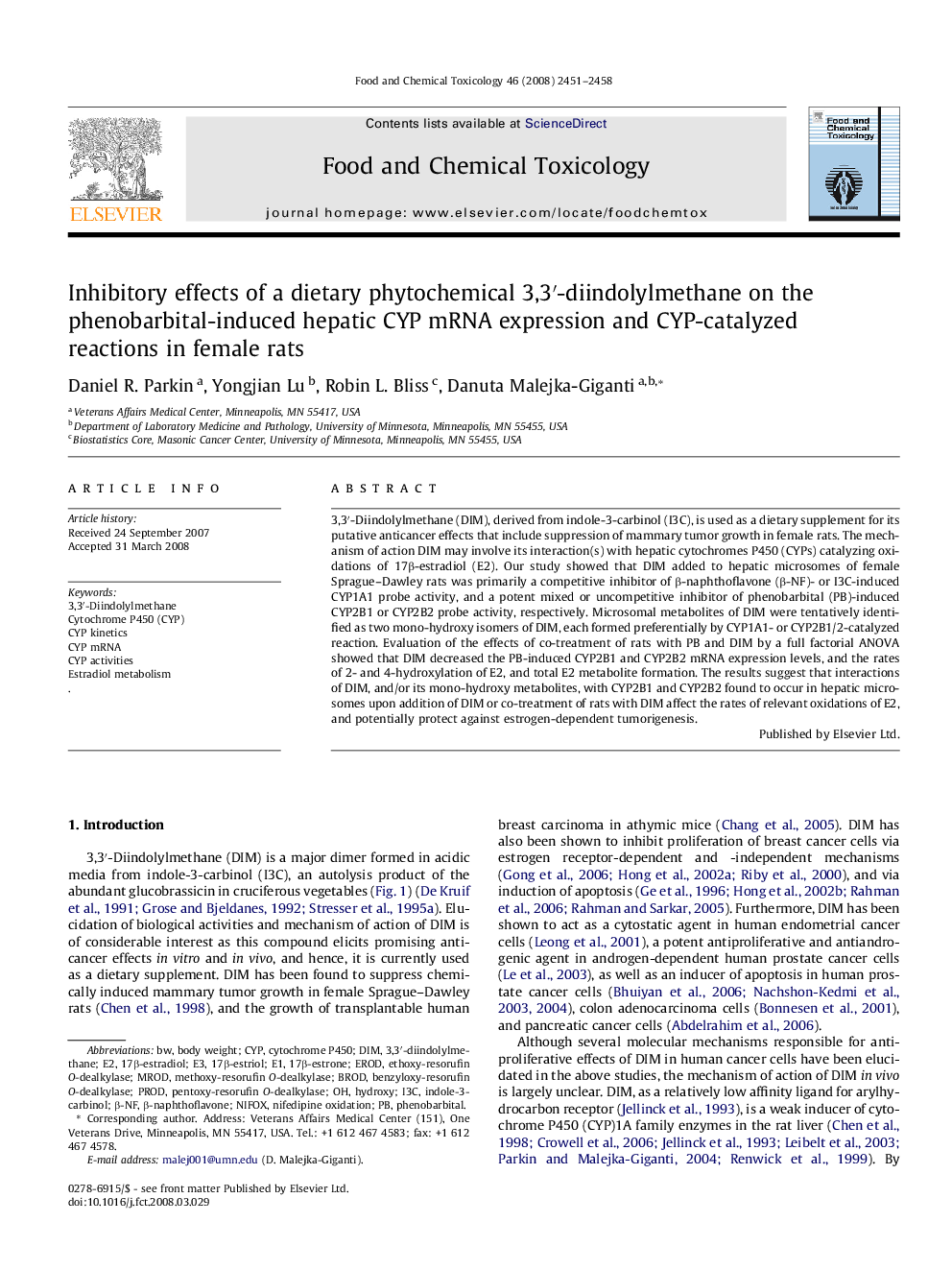| Article ID | Journal | Published Year | Pages | File Type |
|---|---|---|---|---|
| 2586582 | Food and Chemical Toxicology | 2008 | 8 Pages |
3,3′-Diindolylmethane (DIM), derived from indole-3-carbinol (I3C), is used as a dietary supplement for its putative anticancer effects that include suppression of mammary tumor growth in female rats. The mechanism of action DIM may involve its interaction(s) with hepatic cytochromes P450 (CYPs) catalyzing oxidations of 17β-estradiol (E2). Our study showed that DIM added to hepatic microsomes of female Sprague–Dawley rats was primarily a competitive inhibitor of β-naphthoflavone (β-NF)- or I3C-induced CYP1A1 probe activity, and a potent mixed or uncompetitive inhibitor of phenobarbital (PB)-induced CYP2B1 or CYP2B2 probe activity, respectively. Microsomal metabolites of DIM were tentatively identified as two mono-hydroxy isomers of DIM, each formed preferentially by CYP1A1- or CYP2B1/2-catalyzed reaction. Evaluation of the effects of co-treatment of rats with PB and DIM by a full factorial ANOVA showed that DIM decreased the PB-induced CYP2B1 and CYP2B2 mRNA expression levels, and the rates of 2- and 4-hydroxylation of E2, and total E2 metabolite formation. The results suggest that interactions of DIM, and/or its mono-hydroxy metabolites, with CYP2B1 and CYP2B2 found to occur in hepatic microsomes upon addition of DIM or co-treatment of rats with DIM affect the rates of relevant oxidations of E2, and potentially protect against estrogen-dependent tumorigenesis.
